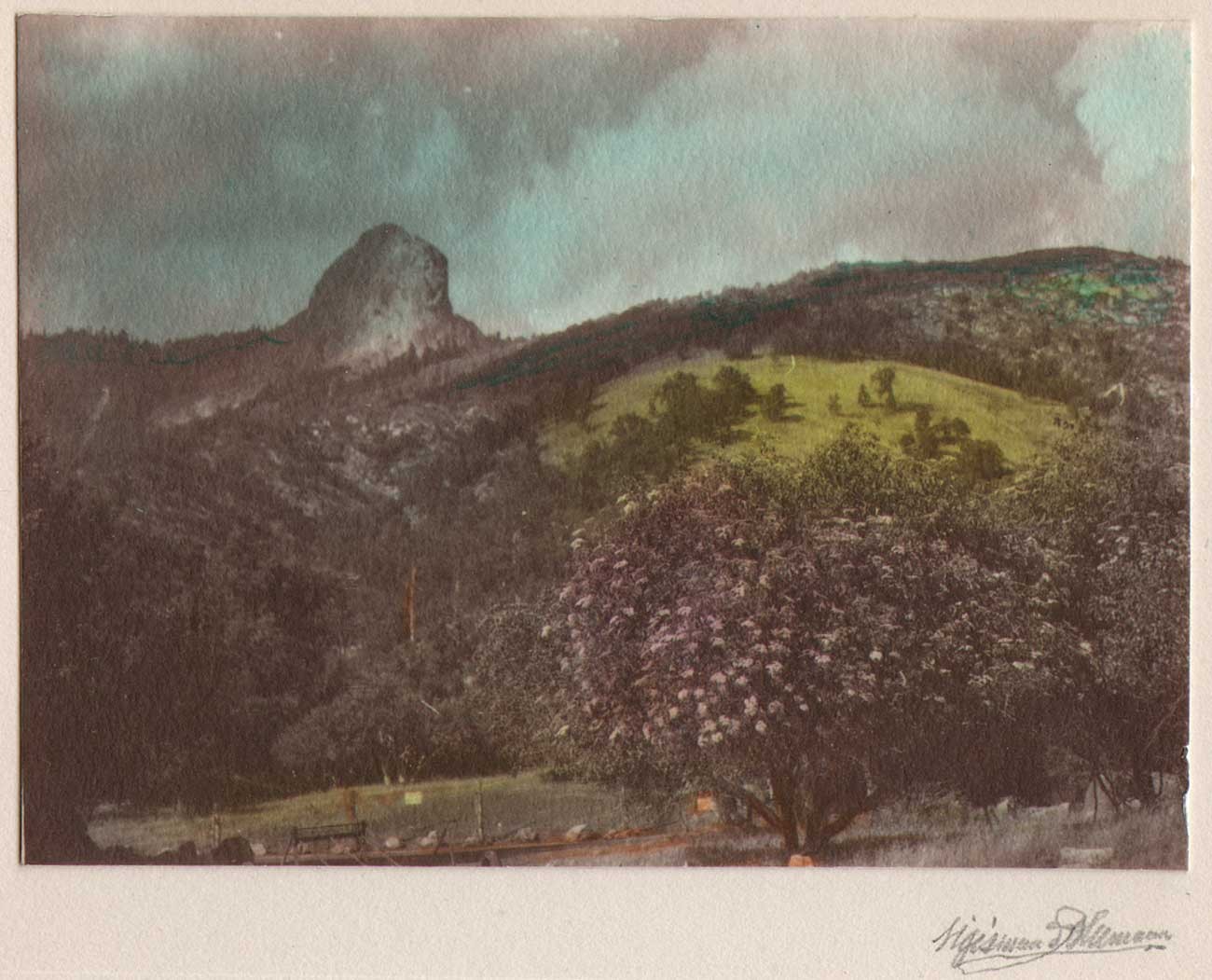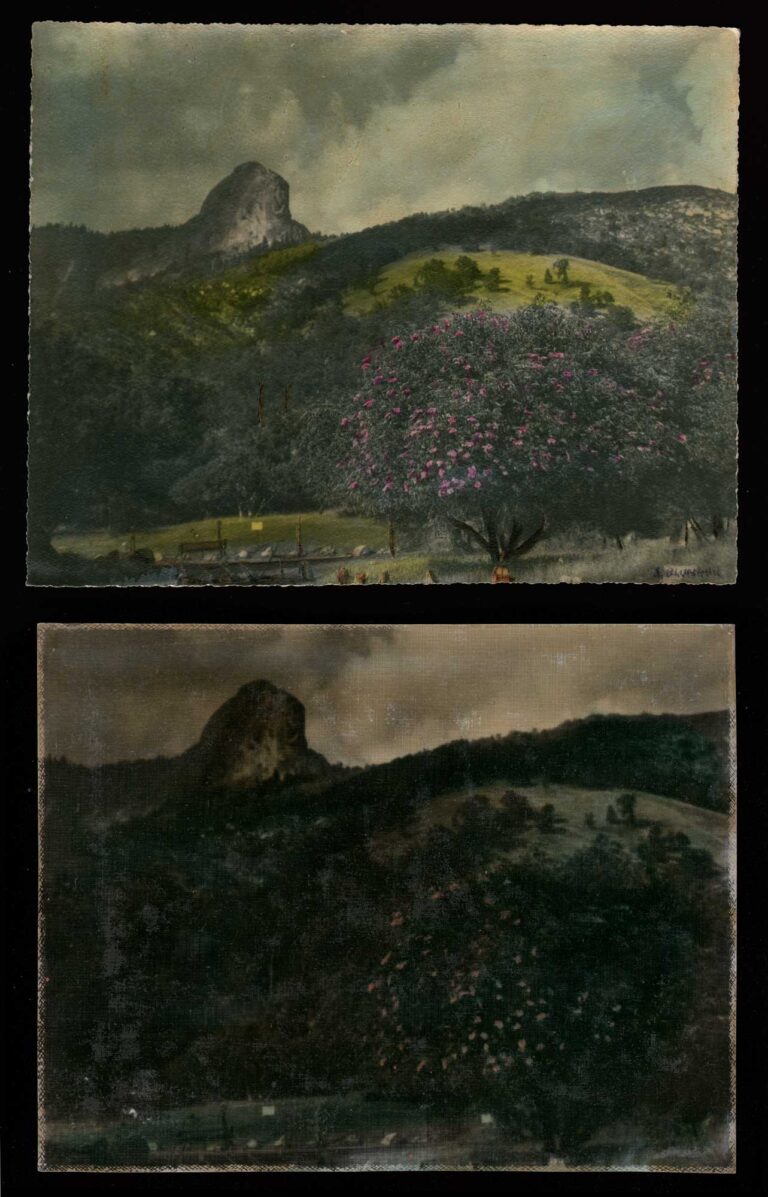
Moro Rock: Sequoia National Park
A slightly cropped version of this photograph appeared in black & white and accompanied an article written by Sigismund Blumann published in Camera Craft, July, 1933 titled:
Cameralogues
Sequoia National Park
Virgin Country for the Cameraist and Camera:
Moro Rock has as many aspects as there are points, half-points, and quarter-points to the compass. How it is shaped depends upon your approach to it. Its contours are temperamental. Seen from the highway, the Generals Highway if you please, it is massive, awkwardly bulky but impressive in a way. Look at it from the Switchback and it is a shapely mountain with all the dignity of standing alone, assertive, unafraid. Climb the nearby heights and it sticks up like the first phalanx of a giant’s thumb.
From every open vantage point in the park you can see old Moro. I have had its greetings from so many trails in such widely divergent places in the Sequoia district and from such different distances that my memory of the park somehow holds the rock as a pivotal point.
When and where the above picture was taken the flowers were in bloom and the Sierra are lavish in such wild-flowers as are indigenous to the soil and altitude. Oddly, these flowers are in marked contrast dimensionally to the trees and mountains. Some of them are tiny, even minute, but none the less charming. In this picture the foreground shows them out of drawing. They look as large as cauliflowers because of the exaggerated perspective and their masses. (1.)
Print details:
mount recto: Blumann called this a “Pastelograph”-simply a hand-colored black and white photograph. It is graphite signed in lower right corner of impression: Sigismund Blumann
mount verso: signed in graphite, presumably in author’s hand: Morro (sic) Rock: Sequoia National Park
Moro Rock is a dome-shaped granite monolith. Common in the Sierra Nevada, these domes form by exfoliation, the spalling or casting off in scales, plates, or sheets of rock layers on otherwise unjointed granite. Outward expansion of the granite results in exfoliations. Expansion results from load relief; when the overburden that once capped the granite has eroded away, the source of compression is removed and the granite slowly expands. Fractures that form during exfoliation tend to cut corners. This ultimately results in rounded dome-like forms. (2.)
Sigismund Blumann: 1872-1956
print provenance: author’s grandson
1. Camera Craft: July, 1933: p. 287
2. Moro Rock: Wikipedia accessed June, 2014
